Telerehabilitation for chronic respiratory disease
- PMID: 33511633
- PMCID: PMC8095032
- DOI: 10.1002/14651858.CD013040.pub2
Telerehabilitation for chronic respiratory disease
Abstract
Background: Pulmonary rehabilitation is a proven, effective intervention for people with chronic respiratory diseases including chronic obstructive pulmonary disease (COPD), interstitial lung disease (ILD) and bronchiectasis. However, relatively few people attend or complete a program, due to factors including a lack of programs, issues associated with travel and transport, and other health issues. Traditionally, pulmonary rehabilitation is delivered in-person on an outpatient basis at a hospital or other healthcare facility (referred to as centre-based pulmonary rehabilitation). Newer, alternative modes of pulmonary rehabilitation delivery include home-based models and the use of telehealth. Telerehabilitation is the delivery of rehabilitation services at a distance, using information and communication technology. To date, there has not been a comprehensive assessment of the clinical efficacy or safety of telerehabilitation, or its ability to improve uptake and access to rehabilitation services, for people with chronic respiratory disease.
Objectives: To determine the effectiveness and safety of telerehabilitation for people with chronic respiratory disease.
Search methods: We searched the Cochrane Airways Trials Register, and the Cochrane Central Register of Controlled Trials; six databases including MEDLINE and Embase; and three trials registries, up to 30 November 2020. We checked reference lists of all included studies for additional references, and handsearched relevant respiratory journals and meeting abstracts.
Selection criteria: All randomised controlled trials and controlled clinical trials of telerehabilitation for the delivery of pulmonary rehabilitation were eligible for inclusion. The telerehabilitation intervention was required to include exercise training, with at least 50% of the rehabilitation intervention being delivered by telerehabilitation.
Data collection and analysis: We used standard methods recommended by Cochrane. We assessed the risk of bias for all studies, and used the ROBINS-I tool to assess bias in non-randomised controlled clinical trials. We assessed the certainty of evidence with GRADE. Comparisons were telerehabilitation compared to traditional in-person (centre-based) pulmonary rehabilitation, and telerehabilitation compared to no rehabilitation. We analysed studies of telerehabilitation for maintenance rehabilitation separately from trials of telerehabilitation for initial primary pulmonary rehabilitation.
Main results: We included a total of 15 studies (32 reports) with 1904 participants, using five different models of telerehabilitation. Almost all (99%) participants had chronic obstructive pulmonary disease (COPD). Three studies were controlled clinical trials. For primary pulmonary rehabilitation, there was probably little or no difference between telerehabilitation and in-person pulmonary rehabilitation for exercise capacity measured as 6-Minute Walking Distance (6MWD) (mean difference (MD) 0.06 metres (m), 95% confidence interval (CI) -10.82 m to 10.94 m; 556 participants; four studies; moderate-certainty evidence). There may also be little or no difference for quality of life measured with the St George's Respiratory Questionnaire (SGRQ) total score (MD -1.26, 95% CI -3.97 to 1.45; 274 participants; two studies; low-certainty evidence), or for breathlessness on the Chronic Respiratory Questionnaire (CRQ) dyspnoea domain score (MD 0.13, 95% CI -0.13 to 0.40; 426 participants; three studies; low-certainty evidence). Participants were more likely to complete a program of telerehabilitation, with a 93% completion rate (95% CI 90% to 96%), compared to a 70% completion rate for in-person rehabilitation. When compared to no rehabilitation control, trials of primary telerehabilitation may increase exercise capacity on 6MWD (MD 22.17 m, 95% CI -38.89 m to 83.23 m; 94 participants; two studies; low-certainty evidence) and may also increase 6MWD when delivered as maintenance rehabilitation (MD 78.1 m, 95% CI 49.6 m to 106.6 m; 209 participants; two studies; low-certainty evidence). No adverse effects of telerehabilitation were noted over and above any reported for in-person rehabilitation or no rehabilitation.
Authors' conclusions: This review suggests that primary pulmonary rehabilitation, or maintenance rehabilitation, delivered via telerehabilitation for people with chronic respiratory disease achieves outcomes similar to those of traditional centre-based pulmonary rehabilitation, with no safety issues identified. However, the certainty of the evidence provided by this review is limited by the small number of studies, of varying telerehabilitation models, with relatively few participants. Future research should consider the clinical effect of telerehabilitation for individuals with chronic respiratory diseases other than COPD, the duration of benefit of telerehabilitation beyond the period of the intervention, and the economic cost of telerehabilitation.
Trial registration: ClinicalTrials.gov NCT02269618 NCT02706613 NCT02667171 NCT01423227 NCT03432117 NCT00169897 NCT02618746 NCT00512837 NCT00563745 NCT00752531 NCT01724684 NCT01987544 NCT02085187 NCT03489642 NCT04284865 NCT04521608 NCT04533412 NCT04550741 NCT02258646 NCT02404831 NCT03443817 NCT03548181 NCT03569384 NCT03634553 NCT03914027 NCT03981783 NCT03997513.
Copyright © 2021 The Cochrane Collaboration. Published by John Wiley & Sons, Ltd.
Conflict of interest statement
NSC: Dr Cox holds a National Health and Medical Research Council (NHMRC) Australia Early Career Fellowship (GNT1119970). She presented workshops relating to pulmonary rehabilitation (including alternative models of delivery) at the 2018 National General Practitioners Meeting sponsored by Boeringher Ingelheim and monies were paid to her host institution. Dr Cox is an author on trials included in this review.
SDC: Professor Dal Corso was supported by funding from Sao Paulo Research Foundation (FAPESP SPRINT grant 17/50273‐4), Brazil.
HH: Dr Hansen has received a personal post doctoral grants from the Capital Region of Copenhagen (governmental funding), teaching fee from GSK (private company), The association of Danish Physiotherapist (NGO) and royalties from educational books chapters written for Munksgaard Denmark (publisher). He is an author on trials included in this review.
CFM: Professor McDonald has developed educational presentations sponsored by Menarini and Astra Zeneca with monies to her institution. She has also received in kind support from Air Liquide for a clinical trial of oxygen therapy. She has received competitive research funding from the National Health and Medical Research Council (Australia) (GNT1101616) for a trial of telerehabilitation in COPD, and is an author on one of the trials included in this review. Professor McDonald is an author on trials included in this review.
CJH: none known
PZ: Dr Zanaboni holds a Research Council of Norway Project Grant (228919/H10) titled 'Long‐term integrated telerehabilitation of COPD patients: a multi centre randomised controlled trial'.
JAA: Professor Alison has received competitive research funding from the National Health and Medical Research Council (Australia) (GNT1101616) for a trial of telerehabilitation in COPD, and is an author on one of the trials included in this review.
POH: Dr O'Halloran is an author on one of the trials included in this review.
HM: none known
AEH: Professor Holland has received competitive research funding from the National Health and Medical Research Council (Australia) (GNT1101616) for a trial of telerehabilitation in COPD, and is an author on trials included in this review. The NHMRC supports the independent conduct and publication of this Cochrane Review.
Seven review authors (NSC, CFM, CJH, JAA, POH, HH, AEH) were co‐authors on at least one study included in this review. As such, at least one independent co‐author undertook data extraction and the assessment of risks of bias.
Figures
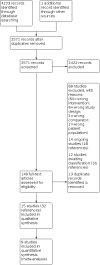

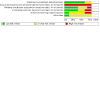
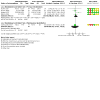
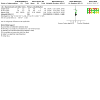

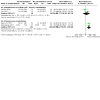


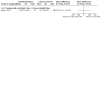




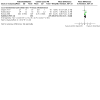
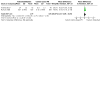
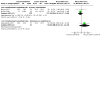
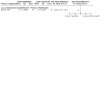


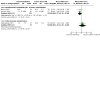

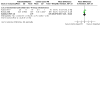
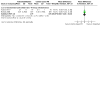
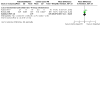
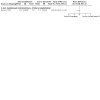

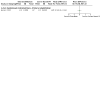
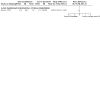

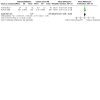







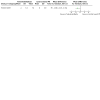
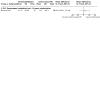
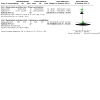

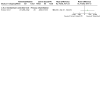
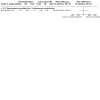

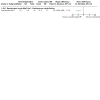


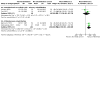















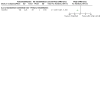

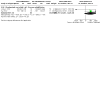



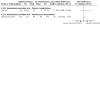




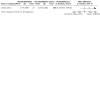



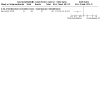
Comment in
-
Virtual vs. In-Person Pulmonary Rehabilitation for Chronic Lung Disease.Am Fam Physician. 2022 Feb 1;105(2):135-136. Am Fam Physician. 2022. PMID: 35166511 No abstract available.
References
References to studies included in this review
Barberan‐Garcia 2014 (Barcelona and Athens) {published data only (unpublished sought but not used)}
Barberan‐Garcia 2014 (Trondheim) {published data only (unpublished sought but not used)}
Bernocchi 2018 {published data only}
-
- Bernocchi P, Scalvini S, Galli T, Paneroni M, Baratti D, Turla O, et al. A multidisciplinary telehealth program in patients with combined chronic obstructive pulmonary disease and chronic heart failure: study protocol for a randomized controlled trial. Trials 2016;17:462. [DOI: 10.1186/s13063-016-1584-x] - DOI - PMC - PubMed
-
- Paneroni M, Scalvini S, Bernocchi P, Galli T, Baratti D, La Rovere MT, et al. Home telerehabilitation maintenance program for patients affected by COPD and CHF. European Respiratory Journal 2016;48 (Suppl 60):OA268. [DOI: 10.1183/13993003.congress-2016.OA268] - DOI
Bourne 2017 {published data only}
-
- Wilkinson T, Bourne S, Devos R, North M, Chauhan A, Green B, et al. Online versus face to face pulmonary rehabilitation for patients with COPD: a randomised controlled trial. American Journal of Respiratory and Critical Care Medicine 2017;195:A4940. [DOI: 10.1164/ajrccm-conference.2017.C17] - DOI - PMC - PubMed
Chaplin 2017 {published data only}03142263
-
- Barnes A, Newby C, Chaplin E, Houchen-Wolloff L, Singh S. Purposeful physical activity in COPD patients comparing standard and web based pulmonary rehabilitation. European Respiratory Journal 2016;48:PA2056. [DOI: 10.1183/13993003.congress-2016.PA2056] - DOI
-
- Chaplin E, Hewitt S, Apps L, Edwards K, Brough C, Glab A, et al. An interactive web-based pulmonary rehabilitation programme: A randomised controlled feasibility trial. European Respiratory Journal 2016;48:PA2064. [DOI: ]
-
- Chaplin E, Hewitt S, Singh S. Do patients gain as much knowledge around their condition from a web-based pulmonary rehabilitation programme? Thorax 2017;72 (Suppl 3):A52-3.
Hansen 2020 {published data only (unpublished sought but not used)}
-
- Godtfredsen N, Frølich A, Bieler T, Beyer N, Kallemose T, Wilcke T, Østergaard L, Andreassen HF, Martinez G, Lavesen M, Hansen H. 12-months follow-up of pulmonary tele-rehabilitation versus standard pulmonary rehabilitation: a multicentre randomised clinical trial in patients with severe COPD. Respiratory Medicine 2020;172:106129. - PubMed
-
- Hansen H, Bieler T, Beyer N, Kallemose T, Frolich A, Godtfredsen N. 1-year follow-up of pulmonary tele-rehabilitation versus conventional pulmonary rehabilitation: a multicenter, single blinded, superiority RCT. In: European Respiratory Journal. Vol. 54. 2019:Suppl 63.
-
- Hansen H, Frolich A, Beyer N, Bieler T, Kallemose T, Godtfredsen N. Pulmonary tele-rehabilitation versus conventional pulmonary rehabilitation: a multicenter, single blinded, superiority RCT. American Journal of Respiratory and Critical Care Medicine 2019;199:A4273.
Holland 2017 {published and unpublished data}
-
- Grimwood CL, Holland AE, McDonald CF, Mahal A, Hill CJ, Lee AL, Cox NS, Moore R, Nicolson C, O'Halloran P, Lahham A, Gillies R, Burge AT. Comparison of self-report and administrative data sources to capture health care resource use in people with chronic obstructive pulmonary disease following pulmonary rehabilitation. BMC Health Services Research 2020;20(1):1061. - PMC - PubMed
-
- Holland AE, Mahal A, Hill CJ, Lee AL, Burge AT, Moore R, et al. Benefits and costs of home-based pulmonary rehabilitation in chronic obstructive pulmonary disease - a multi centre randomised controlled equivalence trial. BMC Pulmonary Medicine 2013;13:57. [DOI: 10.1186/1471-2466-13-57] - DOI - PMC - PubMed
Knox 2019 {published data only (unpublished sought but not used)}
Kwon 2018 {published data only (unpublished sought but not used)}
Lahham 2020 {published data only}
-
- Lahham A, McDonald CF, Moore R, Cox NS, Rawlings S, Nichols A, et al. The impact of home-based pulmonary rehabilitation on people with mild chronic obstructive pulmonary disease: A randomised controlled trial. Clinical Respiratory Journal 2020;14(4):335-44. - PubMed
Maltais 2008 {published data only}IRSCTN32824512
-
- Maltais F, Bourbeau J, Shapiro S, Lacasse Y, Perrault H, Baltzan M, et al. Effects of home-based pulmonary rehabilitation in patients with chronic obstructive pulmonary disease. Annals of Internal Medicine 2008;149(12):869-78. - PubMed
Stickland 2011 {published data only}
Tabak 2014 {published data only}
-
- Tabak M, Brusse-Keizer M, Ommeren C, Kotte H, Weltevreden P, Hermens H, et al. A telecare programme for self-management of COPD exacerbations and promotion of an active lifestyle. European Respiratory Journal 2013;A3036:P4911.
Tsai 2017 {published data only}
-
- Tsai L, Mcnamara R, Moddel C, Mckenzie D, Alison J, McKeough Z. Telerehabilitation improves exercise capacity and quality of life in people with chronic obstructive pulmonary disease (COPD): a randomised controlled trial. Respirology 2016;21 (Suppl 2):TP086. [DOI: 10.1111/resp.12755] - DOI
-
- Tsai LLY, McNamara RJ, Moddel C, Alison JA, McKenzie DK, McKeough ZJ. Home-based telerehabilitation via real-time videoconferencing improves endurance exercise capacity in patients with COPD: The randomized controlled TeleR Study. Respirology 2017;22:699-707. [DOI: 10.1111/resp.12966] - DOI - PubMed
Vasilopoulou 2017 {published data only}
-
- Kaltsakas G, Papaioannou AI, Vasilopoulou M, Spetsioti S, Gennimata SA, Palamidas AF, et al. Effectiveness of home maintenance telerehabilitation on COPD exacerbations. Thorax 2015;70 (Suppl 3):A56. [DOI: 10.1136/thoraxjnl-2015-207770.104] - DOI
-
- Kaltsakas G, Papaioannou AI, Vasilopoulou M, Spetsioti S, Gennimata S-A, Palamidas AF, et al. Tele-monitoring intervention on COPD exacerbations. European Respiratory Journal 2016;48:OA3045. [DOI: 10.1183/13993003.congress-2016.OA3045] - DOI
-
- Vasilopoulou M, Papaioannou AI, Chynkiamis N, Vasilogiannakopoulou T, Spetsioti S, Louvaris Z, et al. Effectiveness of home telerehabilitation on functional capacity and daily physical activity in COPD patients. European Respiratory Journal 2015;46:OA273. [DOI: 10.1183/13993003.congress2015.OA273] - DOI
-
- Vasilopoulou M, Papaioannou AI, Kaltsakas G, Gennimata SA, Palamidas AF, Feridou C, et al. Evidence of benefit from home tele-rehabilitation on chronic dyspnea and quality of life in patients with COPD. European Respiratory Journal 2015;46 (Suppl 59):PA3721. [DOI: 10.1183/13993003.congress-2015.PA3721] - DOI
-
- Vasilopoulou M, Papaioannou AI, Kaltsakas G, Louvaris Z, Chynkiamis N, Spetsioti S, et al. Home-based maintenance telerehabilitation reduces the risk for acute exacerbations of COPD, hospitalisation and emergency department visits. European Respiratory Journal 2017;49:1602129. [DOI: 10.1183/13993003.02129-2016] - DOI - PubMed
References to studies excluded from this review
Ahmed 2011 {published data only}
-
- Ahmed S, Bartlett SJ, Ernst P, Lin C-J, Pare G, Perreault R, et al. My Asthma Portal: Preliminary results of a web-based self management intervention. American Journal of Critical Care and Respiratory Medicine 2011;183(1MeetingAbstracts):A5321.
Ahmed 2016 {published data only}
Ancochea 2018 {published data only}
Anonymous 2009 {published data only}
-
- Anonymous. Summaries for patients. Internet-based program to assist patients in asthma care. Annals of Internal Medicine 2009;151(2):I-42. - PubMed
Arbillaga‐Extarri 2018 {published data only}
-
- Arbillaga-Etxarri A, Gimeno-Santos E, Barberan-Garcia A, Balcells E, Benet M, Borrell E, et al. Long-term efficacy and effectiveness of a behavioural and community-based exercise intervention (Urban Training) to increase physical activity in patients with COPD: a randomised controlled trial. European Respiratory Journal 2018;52:1800063. [DOI: 10.1183/13993003.00063-2018] - DOI - PMC - PubMed
Aymerich 2016 {published data only}
-
- Aymerich J, Puhan M, Jongh C, Demeyer H, Erzen D, Santos EG, et al. Responsiveness of PROactive instruments to measure physical activity inCOPD patients. European Respiratory Journal 2016;Suppl 60:PA1896.
Barnes 2016 {published data only}
-
- Barnes A, Newby C, Chaplin E, Houchen-Wolloff L, Singh S. Purposeful physical activity in COPD patients comparing standard and web-based pulmonary rehabilitation. European Respiratory Journal 2016;48:PA2056. [DOI: 10.1183/13993003.congress-2016.PA2056] - DOI
Bender 2015 {published data only}
-
- Bender BG, Make BJ, Emmett A, Sharma S, Stempel D. Enhancing physical activity in patients with chronic obstructive pulmonary disease (COPD) through a program of patient selected goals. American Journal of Respiratory and Critical Care Medicine 2015;191:A2458.
Bhatt 2019 {published data only}
Broadbent 2018 {published data only}
Burkow 2015 {published data only}
Cameron‐Tucker 2014 {published data only}
-
- Cameron-Tucker H, Wood-Baker R, Joseph L, Walters J, Schutz N, Walters H. A randomized controlled trial of telephone health-mentoring including home-based walking (TELE-REHAB) before group rehabilitation versus usual care and subsequent group rehabilitation (Group-Rehab). Respirology 2014;19 (S2):59:TP010.
Cameron‐Tucker 2016 {published data only}
-
- Cameron-Tucker HL, Wood-Baker R, Joseph L, Walters JA, Schuz N, Walters EH. A randomized controlled trial of telephone-mentoring with home-based walking preceding rehabilitation in COPD. International Journal of Chronic Obstructive Pulmonary Disease 2016;11:1991-2000. [DOI: 10.2147/COPD.S109820] - DOI - PMC - PubMed
Coultas 2014 {published data only}
-
- Coultas DB, Jackson BE, Russo R, Peoples J, Ashmore J, Sloan J, et al. Six month results of a behavioral self-management intervention to enhance lifestyle physical activity among patients with COPD. American Journal of Respiratory and Critical Care Medicine 2014;189:A3643.
Coultas 2018 {published data only}
-
- Coultas DB, Jackson BE, Russo R, Peoples J, Singh KP, Sloan J, et al. Home-based physical activity coaching, physical activity, and health care utilization in chronic obstructive pulmonary disease chronic obstructive pulmonary disease self-management activation research trial secondary outcomes. Annals of the American Thoracic Society 2018;15(4):470-8. [DOI: 10.1513/AnnalsATS.201704-308OC] - DOI - PMC - PubMed
Demeyer 2015 {published data only}
-
- Demeyer H, Louvaris Z, Tanner R, Rubio N, Frei A, De Jong C, et al. Increasing physical activity in patients with COPD using a telecoaching program: A multicenter RCT. European Respiratory Journal 2015;46(Suppl 59):OA278.
Demeyer 2017 {published data only}
-
- Demeyer H, Louvaris Z, Frei A, Rabinovich RA, Jong C, Gimeno-Santos E, et al. Physical activity is increased by a 12-week semi automated telecoaching programme in patients with COPD: a multicentre randomised controlled trial. Thorax 2017;72(5):415–23. [DOI: 10.1136/thoraxjnl-2016-209026] - DOI - PMC - PubMed
Dinesen 2012 {published data only}
-
- Dinesen B, Haesum LK, Soerensen N, Nielsen C, Grann O, Hejlesen O, et al. Using preventive home monitoring to reduce hospital admission rates and reduce costs: a case study of telehealth among chronic obstructive pulmonary disease patients. Journal of Telemedicine and Telecare 2012;18(4):221-5. [DOI: 10.1258/jtt.2012.110704] - DOI - PubMed
Feng 2018 {published data only}
Gaeckle 2016 {published data only}
-
- Gaeckle N, Ciccolella D, Criner A, Criner G. Participation in a telemedicine program for chronic obstructive pulmonary disease improves daily symptoms. American Journal of Respiratory and Critical Care Medicine 2017;193:A1688.
Hamir 2010 {published data only}
-
- Hamir R, Simmonds LG, Pratley M, Stickland MK, Rodgers W, Wong EYL. A novel patient support system to further improve health-related quality of life through self-management after pulmonary rehabilitation. American Journal of Respiratory and Critical Care Medicine 2010;181:A1215.
Hoaas 2016 {published data only}
-
- Hoaas H, Andreassen HK, Lien LA, Hjalmarsen A, Zanaboni P. Adherence and factors affecting satisfaction in long-term telerehabilitation for patients with chronic obstructive pulmonary disease: a mixed methods study. BMC Medical Informatics and Decision Making 2016;16:26. [DOI: 10.1186/s12911-016-0264-9] - DOI - PMC - PubMed
Hornikx 2014 {published data only}
-
- Hornikx M, Demeyer H, Camillo CAM, Janssens W, Troosters T. The effects of physical activity coaching in patients with COPD after an acute exacerbation. European Respiratory Journal 2014;44(Suppl 58):1910.
Hornikx 2015 {published data only}
-
- Hornikx M, Demeyer H, Camillo CA, Janssens W, Troosters T. The effects of a physical activity counseling program after an exacerbation inpatients with Chronic Obstructive Pulmonary Disease: a randomized controlled pilot study. BMC Pulmonary Medicine 2015;15:136. [DOI: 10.1186/s12890-015-0126-8] - DOI - PMC - PubMed
Horton 2014 {published data only}
-
- Horton E, Mitchell K, Johnson-Warrington V, Apps L, Young H, Singh S. Results of the SPACE FOR COPD programme in comparison to pulmonary rehabilitation at 6 months. European Respiratory Journal 2014;44(Suppl58):4833.
Jackson 2015 {published data only}
-
- Jackson BE, Coultas D, Russo R, Ashmore J, Sloan J, Uhm M, et al. Benefits of a lifestyle physical activity intervention for COPD are limited to patients with moderate impairment. American Journal of Respiratory and Critical Care Medicine 2015;191:A4448.
Jansen‐Kosterink 2011 {published data only}
-
- Jansen-Kosterink S, In 't Veld RH, Wever D, Hermens H, Vollenbroek-Hutten M. Evaluation of a web based home training program for COPD patients: a controlled trial. European Respiratory Journal 2011;38:3475.
Kaliaraju 2017 {published data only}
-
- Kaliaraju D, Man WDC, Nolan CM, Patel S, Barker RE. Unsupervised home-based versus supervised outpatient pulmonary rehabilitation (PR) in COPD: a propensity-matched, non-inferiority analysis. European Respiratory Journal 2017;50:OA308. [DOI: 10.1183/1393003.congress-2017.OA308] - DOI
Liu 2008 {published data only}
-
- Liu WT, Wang CH, Lin HC, Lin SM, Lee KY, Lo YL, et al. Efficacy of a cell phone-based exercise programme for COPD. European Respiratory Journal 2008;32(3):651-9. - PubMed
Loeckx 2015 {published data only}
-
- Loeckx M, Louvaris Z, Tanner RJ, Yerramasu C, Buesching G, Frei A, et al. Compliance with a three month telecoaching program to enhance physical activity in patients with chronic obstructive pulmonary disease. American Journal of Respiratory and Critical Care Medicine 2015;191:A2007.
Loeckx 2016 {published data only}
-
- Loeckx M, Louvaris Z, Tanner R, Rubio N, Frej A, De Jong C, et al. Contact time between patients with COPD and coach during an activity telecoaching intervention: impact on the intervention effect. European Respiratory Journal 2016;48:OA4817. [DOI: 10.1183/13993003.congress-2016.OA4817] - DOI
Martinez 2014 {published data only}
-
- Martinez CH, Moy ML, Nguyen HQ, Cohen M, Kadri R, Roman P, et al. Taking Healthy Steps: rationale, design and baseline characteristics of a randomized trial of a pedometer-based Internet-mediated walking program in veterans with chronic obstructive pulmonary disease. BMC Pulmonary Medicine 2014;14:12. [DOI: 10.1186/1471-2466-14-12] - DOI - PMC - PubMed
Martinez 2014a {published data only}
-
- Martinez CH, Moy ML, Nguyen HQ, Cohen MD, Kadri R, Roman P, et al. Internet-mediated recruitment of rural veterans in a randomized controlled trial of a walking program for COPD. American Journal of Respiratory and Critical Care Medicine 2014;189:A5362.
Mazzoleni 2014 {published data only}
-
- Mazzoleni S, Montagnani G, Vagheggini G, Buono L, Moretti F, Dario P, et al. Interactive videogame as rehabilitation tool of patients with chronic respiratory diseases: preliminary results of a feasibility study. Respiratory Medicine 2014;108(10):1516-24. [DOI: 10.1016/j.rmed.2014.07.004] - DOI - PubMed
Mitchell 2013 {published data only}
-
- Mitchell KE, Warrington V, Sewell L, Bankart J, Williams JEA, Steiner M, et al. A randomised controlled trial of a self-management programme of activity coping and education - space for COPD: impact on physical activity at 6 weeks. American Journal of Respiratory and Critical Care Medicine 2013;187:A5952.
Moreau 2008 {published data only}
-
- Moreau L, Weitzenblum E, Lonsdorfer E, Laplaud D. Telemedicine usefulness in a home based rehabilitation program. European Respiratory Journal 2008;32 (Suppl 52):E2803.
Morso 2017 {published data only}
Moy 2014 {published data only}
-
- Moy ML, Collins R, Martinez CH, Kadri R, Roman P, Holleman RG, et al. An internet-mediated, pedometer-based walking program improves HRQL in veterans with COPD. American Journal of Respiratory and Critical Care Medicine 2014;189:A3642.
Moy 2015 {published data only}
-
- Moy ML, Collins RJ, Martinez CH, Kadri R, Roman P, Holleman RG, et al. An internet-mediated pedometer-based program improves health-related quality-of-life domains and daily step counts in COPD: a randomized controlled trial. Chest 2015;148(1):128-37. [DOI: 10.1378/chest.14-1466] - DOI - PMC - PubMed
Moy 2015a {published data only}
Moy 2015b {published data only}
-
- Moy ML, Martinez CH, Kadri R, Roman P, Holleman RG, Kim HM, et al. Long-term effects of an internet-mediated pedometer-based walking program in COPD: A randomized controlled trial. American Journal of Respiratory and Critical Care Medicine 2015;191:A2457.
Moy 2016 {published data only}
-
- Moy ML, Martinez CH, Kadri R, Roman P, Holleman RG, Kim HM, Net al. Long-term effects of an Internet-mediated pedometer-based walking program for chronic obstructive pulmonary disease: randomized controlled trial. Journal of Medical Internet Research 2016;18(8):e215. [DOI: 10.2196/jmir.5622] - DOI - PMC - PubMed
Napolitano 2002 {published data only}
-
- Napolitano MA, Babyak MA, Palmer S, Tapson V, Davis RD, Blumenthal JA. Investigational study of psychological intervention in recipients of lung transplant (INSPIRE) investigators. Effects of a telephone-based psychosocial intervention for patients awaiting lung transplantation. Chest 2002;122(4):1176-84. [DOI: 10.1378/chest.122.4.1176] - DOI - PubMed
NCT00512837 {published data only}
-
- NCT00512837. Mobile phone based structured intervention [A mobile phone based structured intervention to achieve asthma control in patients with uncontrolled persistent asthma: pragmatic randomised controlled trial]. clinicaltrials.gov/ct2/show/NCT00512837 (first received 8 August 2007).
NCT00563745 {published data only}
-
- NCT00563745. Telemedicine for patients with chronic respiratory insufficiency [Randomised trial on telemedicine to save health care requests for patients with severe chronic respiratory failure]. clinicaltrials.gov/ct2/show/NCT00563745 (first received 26 November 2007).
NCT00752531 {published data only}
-
- NCT00752531. Effectiveness of home automated telemanagement in chronic obstructive pulmonary disorder [Evaluation of home automated telemanagement in COPD]. clinicaltrials.gov/ct2/show/NCT00752531 (first received 15 September 2008).
NCT01724684 {published data only}
-
- NCT01724684. Feasibility and effectiveness of telehealth in patients with chronic obstructive pulmonary disease in Taiwan. clinicaltrials.gov/ct2/show/NCT01724684 (first received 12 November 2012).
NCT01987544 {published data only}
-
- NCT01987544. Effects of ergometer training with telemonitoring in patients with chronic obstructive pulmonary disease (COPD) after exacerbation [German: Effekte eines telemonitorisch überwachten ergometertrainings bei patienten mit einer COPD nach exazerbation: eine prospektiv randomisierte studie]. clinicaltrials.gov/ct2/show/NCT01987544 (first received 19 November 2013).
NCT02085187 {published data only}
-
- NCT02085187. Early telemedicine training in patients with COPD [Early telemedicine training and counselling after hospitalization in patients with severe chronic obstructive pulmonary disease: a feasibility study]. clinicaltrials.gov/ct2/show/NCT02085187 (first received 12 March 2014).
NCT03489642 {published data only}
-
- NCT03489642. Innovative pulmonary rehabilitation telehealth program for improving COPD patient outcomes. clinicaltrials.gov/ct2/show/NCT03489642 (first received 5 April 2018).
Nguyen 2009 {published data only}
North 2018 {published data only}
-
- North M, Bourne S, Green B, Chauhan A, Brown T, Winter J, et al. A randomised controlled feasibility trial of an e-health platform supported care vs usual care after exacerbation of COPD. (Rescue COPD). Thorax 2018;73(Suppl 4):A231.
NTR3365 {published data only}
-
- NTR3365. Physical reconditioning in the home environment of patients with the help of a web-based exercise program [Teletreatment for chronic diseased patients; using a webbased exercise program and remote feedback and treatment of a therapist]. www.trialregister.nl/trial/3193 (first received 1 April 2012).
Nyberg 2019 {published data only}
Reguera 2017 {published data only}
-
- Reguera BJ, Lopez EM, Martin ML, Monteagudo LJ, Gutierrez NG, Sanchez M, et al. Efficacy of an integrated internet community program after pulmonary rehabilitation for COPD patients: a pilot randomized control trial. European Respiratory J 2017;50 (Suppl 61):OA514.
Ries 2003 {published data only}
-
- Ries AL, Kaplan RM, Myers R, Prewitt LM. Maintenance after pulmonary rehabilitation in chronic lung disease: a randomized trial. American Journal of Respiratory and Critical Care Medicine 167;6:880-8. - PubMed
Ringbaek 2016 {published data only}
Rosenbek 2015 {published data only}
-
- Rosenbek Minet L, Hansen LW, Pedersen CD, Titlestad IL, Christensen JK, Kidholm K, et al. Early telemedicine training and counselling after hospitalization in patients with severe chronic obstructive pulmonary disease: a feasibility study. BMC Medical Informatics and Decision Making 2015;15:3. - PMC - PubMed
Segrelles 2012 {published data only}
-
- Segrelles G, Gomez-Suarez C, Zamora E, Gonzalez-Gamarra A, Gonzalez-Bejar M, Jordan A, et al. A home telehealth service for patients with severe COPD. The PROMETE study. European Respiratory Journal 2012;40 (Suppl 56):P633. - PubMed
Soriano 2018 {published data only}
-
- Soriano JB, Garcia-Rio F, Vazquez Espinosa E, Diaz De Atauri J, Lopez Yepes L, Galera Martinez R, et al. Efficacy and costs of telehealth for the management of COPD: a multicenter, randomized controlled trial. American Journal of Respiratory and Critical Care Medicine 2018;97:A4546. - PubMed
Stenlund 2019 {published data only}
-
- Stenlund T, Nyberg A, Lundell S, Wadell K. Web-based support for self-management strategies versus usual care for people with COPD in primary healthcare: a protocol for a randomised, 12-month, parallel-group pragmatic trial. BMJ Open 2019;9(10):e030788. [DOI: 10.1136/bmjopen-2019-030788] - DOI - PMC - PubMed
Tabak 2014a {published data only}
-
- Tabak M, op den Akker H, Hermens H. Motivational cues as real-time feedback for changing daily activity behavior of patients with COPD. Patient Education and Counseling 2014;94(3):372-8. - PubMed
Tabak 2014b {published data only}
-
- Tabak M, Vollenbroek-Hutten MM, Valk PD, Palen J, Hermens HJ. A telerehabilitation intervention for patients with Chronic Obstructive Pulmonary Disease: a randomized controlled pilot trial RTY - Journal articles. Clinical Rehabilitation 2014;28(6):582-91. [DOI: 10.1177/0269215513512495] - DOI - PubMed
Talboom‐Kamp 2019 {published data only}
Voncken‐Brewster 2015 {published data only}
-
- Voncken-Brewster V, Tange H, Vries H, Nagykaldi Z, Winkens B, Weijden T. A randomized controlled trial evaluating the effectiveness of a web-based, computer-tailored self-management intervention for people with or at risk for COPD. International Journal of COPD 2015;10:1061-73. [DOI: 10.2147/COPD.S81295] - DOI - PMC - PubMed
Vorrinck 2016 {published data only}
Wan 2017 {published data only}
-
- Wan ES, Kantorowski A, Teylan M, Kadri R, Richardson CR, Garshick E, et al. Patterns of change in daily step count among COPD patients enrolled in A 3-month physical activity intervention. American Journal of Respiratory and Critical Care Medicine 2017;195:A4939. [DOI: 10.1164/ajrccm-conference.2017.C17] - DOI
Wootton 2017 {published data only}
Yorke 2012 {published data only}
-
- Yorke J, Rochnia N, Humphrey J, Hardiker N, Woods M, Newey A. Rehabilitative electronic assistance for COPD in the home (REACH): a feasibility study. American Journal of Respiratory and Critical Care Medicine 2012;185:A4872.
References to studies awaiting assessment
Benzo 2020 {published data only}
-
- Benzo R, Hoult JP, Kramer K, Ridgeway J, Novotny P, Lam N, Thomas BE, Benzo M, Seifert S. Randomized study of home-based rehabilitation with health coaching in chronic obstructive pulmonary disease. In: AJRCCM. Vol. 201. 2020:A2506.
Iturri 2018 {published data only (unpublished sought but not used)}
-
- Galdiz JB, Gomez A, Rodriguez D, Guell R, Cebollero P, Hueto J, Cejudo P, Ortega F, Sayago I, Chic S, Iscar M, Amado C, Rodriguez Trigo G, Cossio B, Bustamante V, Pijoan JI. Telerehabilitation Programme as a Maintenance Strategy for COPD Patients: a 12-Month Randomized Clinical Trial. Archivos de Bronconeumologia 2020. [DOI: 10.1016/j.arbres.2020.03.034] - DOI - PubMed
-
- Iturri JBG, Gomez A, Guell R, Cebollero P, Rodriguez D, Cejudo P, et al. A respiratory tele rehabilitation program as maintenance in patients with chronic obstructive pulmonary disease. European Respiratory Journal 2018;52(Suppl 62):PA2049.
-
- NCT03247933. TELEMEDICINE Maintenance of a respiratory rehabilitation program in patients with chronic obstructive pulmonary disease (TELEREHAB) ["Clinical trial randomized, controlled, parallel-group and open about the use of"TELEMEDICINE"in the management of the maintenance of a respiratory rehabilitation program phase in patients with chronic respiratory diseases"].. clinicaltrials.gov/ct2/show/NCT03247933 (first received 14 August 2015).
Jiang 2020 {published data only}
-
- Jiang Y, Liu F, Guo J, Sun P, Chen Z, Li J, Cai L, Zhao H, Gao P, Ding Z, Wu X. Evaluating an intervention program using wechat for patients with chronic obstructive pulmonary disease: randomized controlled trial. Journal of Medical Internet Research 2020;22(4):e17089. [DOI: 10.2196/17089] - DOI - PMC - PubMed
Jimenez‐Reguera 2020 {published data only}
-
- Jimenez-Reguera B, Maroto Lopez E, Fitch S, Juarros-Monteagudo L, Sanchez-Cortes M, Rodriguez-Hermosa JL, Calle-Rubio M, Hernandez-Criado MT, Lopez-Martin M, Angulo-Diaz Parreno S, Martin-Pintado-Zugasti A, Vilaro J. Development and preliminary evaluation of the effects of an mhealth web-based platform (happyairtm) on adherence to a maintenance program after pulmonary rehabilitation in COPD patients: randomized controlled trial. JMIR mhealth and uhealth 2020;8(7):e18465. [DOI: 10.2196/18465] - DOI - PMC - PubMed
-
- NCT04479930. Effects of an mHealth Web-Based Platform (HappyAir) on Adherence to a Maintenance Program After Pulmonary Rehabilitation in Patients With Chronic Obstructive Pulmonary Disease. https://clinicaltrials.gov/show/NCT04479930 2020. - PMC - PubMed
Leal 2019 {published data only}
-
- Leal L, Goncalves D, Azevedo J, Mazeika PV, Mendonca W, Reis F, Nascimento R, De Souza Y. Use of a simple telecoaching pulmonary rehabilitation protocol for COPD patients. In: European Respiratory Journal. Vol. 54 (Suppl 63). 2019:PA1260. [DOI: 10.1183/13993003.congress-2019.PA1260] - DOI
Lowe 2018 {published data only}
-
- Lowe A, Garcia DO, Stern DA, Gerald LB, Bime C. Feasibility of a home-based exercise intervention with remote guidance for obese asthmatics.. In: American Journal of Respiratory and Critical Care Medicine. Vol. 197. 2018:A4843.
-
- Lowe AA, Garcia DO, Stern DA, Gerald LB, Bime C. Home-based exercise intervention versus remote asthma care guidance via telephone/text message in obese asthmatics: a pilot randomized controlled trial. American Journal of Respiratory and Critical Care Medicine 2018;197:A2715.
NCT04284865 {published data only}
-
- NCT04284865. Optimizing maintenance for patients with COPD via a web platform. https://ClinicalTrials.gov/show/NCT04284865 2020.
NCT04521608 {published data only}
-
- NCT04521608. Increasing Adherence to Pulmonary Rehabilitation After COPD Related Hospitalizations (Study 2). https://clinicaltrials.gov/show/NCT04521608 2020.
NCT04533412 {published data only}
-
- NCT04533412. Comprehensive self-management support for COPD patients. https://clinicaltrials.gov/show/NCT04533412 2020.
NCT04550741 {published data only}
-
- NCT04550741. Long-term maintenance benefits of a pulmonary rehabilitation program using a mobile digital solution: a prospective, randomized, controlled, multicenter study in a population of COPD patients. https://clinicaltrials.gov/show/NCT04550741 2020.
UMIN000042022 {published data only}
-
- UMIN000042022. Effect of pulmonary tele-rehabilitation in patients with COPD. http://www.who.int/trialsearch/Trial2.aspx?TrialID=JPRN-UMIN000042022 2020.
Yuen 2019 {published data only}
References to ongoing studies
ACTRN12619001122145 {published data only}
-
- ACTRN12619001122145. Early home-based pulmonary rehabilitation after hospitalisation in chronic obstructive pulmonary disease (COPD) [The effect of early home-based pulmonary rehabilitation after hospitalisation on hospital readmission in chronic obstructive pulmonary disease (COPD)]. www.anzctr.org.au/Trial/Registration/TrialReview.aspx?id=377702 (first received 1 July 2019).
ChiCTR1900021320 {published data only}
-
- ChiCTR1900021320. The effect of remoted-monitor pulmonary rehabilitation in family for stable COPD patients: a randomized controlled trial. www.chictr.org.cn/historyversionpuben.aspx?regno=ChiCTR1900021320 (first received 18 July 2019).
Cox 2018 {published data only}
NCT02258646 {published data only}
-
- NCT02258646. Long-Term Integrated Telerehabilitation of COPD Patients. A Multi-Center Trial. https://clinicaltrials.gov/ct2/show/NCT02258646 First posted 7 October 2014.
NCT02404831 {published data only}
-
- NCT02404831. An evaluation of web based pulmonary rehabilitation (webbasedPR) [An evaluation of web based pulmonary rehabilitation- pilot study]. clinicaltrials.gov/ct2/show/NCT02404831 (first received 1 April 2015).
NCT03007485 {published data only}NCT03007485
-
- Hajizadeh N, Polo J, Ordonez K, Williams M, Tsang D, Zhang M, Lesser M, Basile M, Pekmezaris R. Referral to telehealth delivered pulmonary rehabilitation (TelePR) versus standard pulmonary rehabilitation (SPR) in hispanic and african patients hospitalized for COPD Exacerbations: results of a randomized controlled trial. In: AJRCCM. Vol. 201. 2020:A6127.
-
- NCT03007485. A comprehensive disease management program to improve quality of life in disparity Hispanic and African-American patients admitted with exacerbation of chronic pulmonary diseases. clinicaltrials.gov/ct2/show/NCT03007485 (First received 2 January 2017).
-
- Pekmezaris R, Kozikowski A, Pascarelli B, Wolf-Klein G, Boye-Codjoe E, Jacome S, Madera D, Tsang D, Guerrero B, Medina R, Polo J, Williams M, Hajizadeh N. A telehealth-delivered pulmonary rehabilitation intervention in underserved hispanic and african american patients with chronic obstructive pulmonary disease: a community-based participatory research approach. JMIR Formative Research 2020;4(1):e13197. [DOI: 10.2196/13197] - DOI - PMC - PubMed
NCT03089853 {published data only}NCT03089853
-
- NCT03089853. Smart telehealth exercise intervention to reduce COPD readmissions. clinicaltrials.gov/ct2/show/NCT03089853 (First received 24 March 2017).
NCT03443817 {published data only}
-
- NCT03443817. Feasibility and effect of a follow up tele-rehabilitation program for chronic obstructive lung disease vs. standard follow up (2-TELEKOL) [Feasibility and effect of a follow up tele-rehabilitation program for chronic obstructive lung disease vs. standard follow up]. clinicaltrials.gov/ct2/show/NCT03443817 (first received 23 February 2018).
NCT03548181 {published data only}
-
- De Las Heras JC, Hilberg O, Lokke A, Bendstrup E. Tele-rehabilitation program in idiopathic pulmonary fibrosis. In: European Respiratory Journal. Vol. 54. 2019.
-
- NCT03548181. Feasibility & effect of a tele-rehabilitation program in idiopathic pulmonary fibrosis (IPF) (3-IPF) [Feasibility & effect of a tele-rehabilitation program in idiopathic pulmonary fibrosis (IPF)]. clinicaltrials.gov/ct2/show/NCT03548181 (first received 7 June 2018).
NCT03569384 {published data only}
-
- NCT03569384. Feasibility & effect of a tele-rehabilitation program for chronic obstructive pulmonary disease vs. standard rehabilitation (TELEKOL-1) [Feasibility & effect of a tele-rehabilitation program for chronic obstructive pulmonary disease vs. standard rehabilitation]. clinicaltrials.gov/ct2/show/NCT03569384 (first received 26 June 2018).
NCT03634553 {published data only}
-
- NCT03634553. Evidence based training and physical activity with an e-health program [Evidence based training and physical activity with an e-health program - a new method for people with chronic obstructive pulmonary disease (COPD) to become more physically active]. clinicaltrials.gov/ct2/show/NCT03634553 (first received 16 August 2018).
NCT03914027 {published data only}
-
- NCT03914027. Feasibility & effect of a tele-rehabilitation program in pulmonary sarcoidosis pulmonary sarcoidosis (TeleSarco) [Feasibility & effect of a tele-rehabilitation program in pulmonary sarcoidosis]. clinicaltrials.gov/ct2/show/NCT03914027 (first received 12 April 2019).
NCT03981783 {published data only}
-
- NCT03981783. Informatics framework for pulmonary rehabilitation (CHIEF-PR) [Comprehensive health informatics engagement framework for pulmonary rehab]. https://clinicaltrials.gov/ct2/show/NCT03981783 (first received 11 June 2019).
NCT03997513 {published data only}
-
- NCT03997513. The impact of a home-based pulmonary telerehabilitation program in acute exacerbations of COPD [The impact of a home-based pulmonary telerehabilitation program on muscle function and quality of life following acute exacerbations of chronic obstructive pulmonary disease]. clinicaltrials.gov/ct2/show/NCT03997513 (first received 25 June 2019).
Additional references
Alison 2017
Bousquet 2007
-
- Bousquet J, Dahl R, Khaltaev N. Global alliance against chronic respiratory diseases. European Respiratory Journal 2007;29:233-9. - PubMed
Brooks 2007
Celli 2004
-
- Celli BR, MacNee W, Agusti A, Anzueto A, Berg B, Buist AS, et al. Standards for the diagnosis and treatment of patients with COPD: a summary of the ATS/ERS position paper. European Respiratory Journal 2004;23:932-46. - PubMed
Chan 2016
Chodzko‐Zajko 2009
Cochrane Airways 2019
-
- Cochrane Airways Trials Register. airways.cochrane.org/trials-register (accessed 7 May 2019).
Cox 2017
-
- Cox NS, Oliveira CO, Lahham A, Holland AE. Pulmonary rehabilitation referral and participation are commonly influenced by environment, knowledge, and beliefs about consequences: a systematic review using the Theoretical Domains Framework. Journal of Physiotherapy 2017;63:84-93. [DOI: 10.1016/j.jphys.2017.02.002] - DOI - PubMed
Desveaux 2015
Dowman 2014
Ferkol 2014
FIRS 2017
-
- Forum of International Respiratory Societies. The global impact of respiratory disease – second edition. www.who.int/gard/publications/The_Global_Impact_of_Respiratory_Disease.pdf (accessed prior to 19 February 2018).
GBD 2020
-
- GBD Chronic Respiratory Disease Collaborators. Prevalence and attributable health burden of chronic respiratory diseases, 1990-2017: a systematic analysis for the Global Burden of Disease Study 2017. Lancet Respiratory Medicine 2020;8:585-596. [DOI: 10.1016/S2213-2600(20)30105-3] - DOI - PMC - PubMed
GOLD 2020
-
- Global Initiative for Chronic Obstructive Lung Disease (GOLD). Global Strategy for the Diagnosis, Management and Prevention of COPD 2020. goldcopd.org/wp-content/uploads/2019/12/GOLD-2020-FINAL-ver1.2-03Dec19_W... (accessed prior to 15 September 2020).
GRADEpro GDT [Computer program]
-
- GRADEpro GDT. Version accessed prior to 20 February 2018. Hamilton (ON): McMaster University (developed by Evidence Prime), 2015. Available at gradepro.org.
Greening 2014
-
- Greening NJ, Williams JEA, Hussain SF, Harvey-Dunstan TC, Bankart MJ, Chaplin EJ, et al. An early rehabilitation intervention to enhance recovery during hospital admission for an exacerbation of chronic respiratory disease: randomised controlled trial. BMJ 2014;349:g4315. [DOI: 10.1136/bmj.g4315] - DOI - PMC - PubMed
Grimshaw 2012
Guell 2000
-
- Guell R, Casan P, Belda J, Sangenis M, Morante F, Guyatt GH, et al. Long-term effects of outpatient rehabilitation of COPD: A randomized trial. Chest 2000;117:976-83. - PubMed
Higgins 2017
-
- Higgins JPT, Altman DG, Sterne JAC (editors). Chapter 8: Assessing risk of bias in included studies. In: Higgins JPT, Churchill R, Chandler J, Cumpston MS (editors), Cochrane Handbook for Systematic Reviews of Interventions version 5.2.0 (updated June 2017), Cochrane, 2017. Available from www.training.cochrane.org/handbook.
Higgins 2017a
-
- Schünemann HJ, Oxman AD, Vist GE, Higgins JPT, Deeks JJ, et al on behalf of the Cochrane Applicability and Recommendations Methods Group. Chapter 12: Interpreting results and drawing conclusions. In: Higgins JPT, Churchill R, Chandler J, Cumpston MS (editors), Cochrane Handbook for Systematic Reviews of Interventions version 5.2.0 (updated June 2017). Cochrane, 2017. Available from training.cochrane.org/handbook.
Hill 2013
Holland 2014
Holland 2014b
-
- Holland AE, Spruit MA, Troosters T, Puhan MA, Pepin V, Saey D, et al. An official European Respiratory Society/ American Thoracic Society technical standard: field walking tests in chronic respiratory disease. European Respiratory Journal 2014;44:1428-46. [DOI: 10.1183/09031936.00150314] - DOI - PubMed
Holland 2020
Houchen‐Wolloff 2020
-
- Houchen-Wolloff L, Steiner MC. Pulmonary rehabilitation at a time of social distancing: prime time for tele-rehabilitation? Thorax 2020;75(6):446-7. - PubMed
Hwang 2015
Johnston 2012
Kairy 2009
Keating 2011
Lee 2015
-
- Lee A, Goldstein R. The role of telemedicine. In: Controversies in COPD. European Respiratory Society, 2015. [DOI: 10.1183/2312508X.erm6915] - DOI
Lee 2017
McCarthy 2015
Moher 2009
NSW ACI 2010
-
- New South Wales (Australia) Agency for Clinical Innovation. Improving management of patients with severe chronic respiratory disease and severe chronic cardiac disease in the community. www.aci.health.nsw.gov.au/__data/assets/pdf_file/0008/159497/Proposal_SC..., NSW (accessed prior to 20 February 2018).
Puhan 2005
Puhan 2016
RevMan 2014 [Computer program]
-
- Review Manager (RevMan). Version 5.3. Copenhagen: The Nordic Cochrane Centre, The Cochrane Collaboration, 2014.
Rochester 2015
-
- Rochester CL, Vogiatzis I, Holland AE, Lareau SC, Marciniuk DD, Puhan MA, et al. An official American Thoracic Society/European Respiratory Society policy statement: Enhancing implementation, use, and delivery of pulmonary rehabilitation. American Journal of Respiratory and Critical Care Medicine 2015;192(11):1373-86. [DOI: 10.1164/rccm.201510-1966ST] - DOI - PubMed
Seidman 2017
-
- Seidman Z, McNamara R, Wootton S, Leung R, Spencer L, Dale M, et al. People attending pulmonary rehabilitation demonstrate a substantial engagement with technology and willingness to use telerehabilitation: a survey. Journal of Physiotherapy 2017;63:175-81. [DOI: 10.1016/j.jphys.2017.05.010] - DOI - PubMed
Spencer 2019
Spitzer 2019
-
- Spitzer KA, Stefan MS, Priya A, Pack QR, Pekow PS, Lagu T, et al. Participation in pulmonary rehabilitation after hospitalization for chronic obstructive pulmonary disease among medicare beneficiaries. Annals of the American Thoracic Society 2019;16(1):99-106. [DOI: 10.1513/AnnalsATS.201805-332OC] - DOI - PMC - PubMed
Spruit 2013
-
- Spruit MA, Singh SJ, Garvey C, ZuWallack R, Nici L, Rochester C, et al. An official American Thoracic Society/European Respiratory Society statement: key concepts and advances in pulmonary rehabilitation. American Journal of Respiratory and Critical Care Medicine 2013;188:e13-64. [DOI: 10.1164/rccm.201309-1634ST] - DOI - PubMed
Sterne 2016
Trevor 2014
-
- Trevor J, Bhatt SP, Wells JM, Hitchcock J, Schumann C, Dransfield MT. Benefits of pulmonary rehabilitation for patients with asthma. American Journal of Respiratory and Critical Care Medicine 2014;189:A1349.
WHO 2016
-
- World Health Organization. Global diffusion of eHealth: making universal health coverage achievable.. Report of the third global survey on eHealth. www.who.int/goe/publications/global_diffusion/en/ (accessed prior to 15 September 2020). [Licence: CC BY-NC-SA 3.0 IGO]
Williams 2014
Yorke 2010
-
- Yorke J, Rochnia N, Walters S, Dugdill L, Vestbo J, Calverley P. Maintenance rehabilitation for chronic obstructive pulmonary disease. Cochrane Database of Systematic Reviews 2010, Issue 11. Art. No: CD008837. [DOI: 10.1002/14651858.CD008837] - DOI
Zwerink 2014
Publication types
MeSH terms
Associated data
LinkOut - more resources
Full Text Sources
Other Literature Sources
Medical

